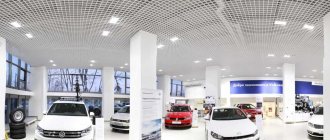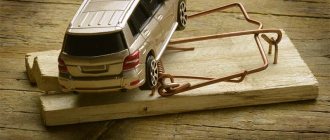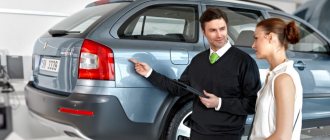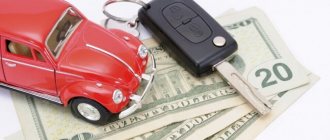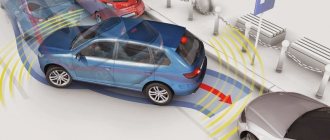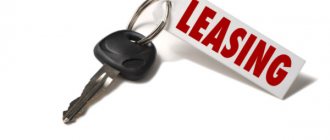Where do most Russian residents buy new cars today? At car dealerships. It is through them that most of the country’s car turnover passes. Many buyers believe that this is the most reliable way to acquire a personal vehicle. In their opinion, with such a purchase, the consumer is especially protected. These assumptions are not unfounded. But only the consumer who knows his rights well and uses the law to his advantage can consider himself truly protected.
Tips for communicating with your dealer
When you come to the dealership to buy a car, you need to properly communicate with the car dealer.
The buyer has the right to expect to receive a discount under certain conditions. In addition, it is worth considering that the seller’s task is to sell the most expensive version of the car as possible.
Once at the car dealership, you need to check the following information:
- Are there any documents proving the legality of the car you like;
- what technical characteristics does this car have?
- on what terms the transaction is concluded, including such nuances as the currency of payment;
- under what conditions is a discount on cars granted?
- Carry out a thorough independent inspection of the selected vehicle;
- based on the inspection results - bargain.
The last point is very important because many buyers think that the price quoted by the employee is final. But this is not true, and there are always ways to reduce it through trading. Usually, the price quoted by the salon already includes this possibility.
What do they check when buying a car at a dealership?
The future car owner should be as careful as possible when purchasing a car from a car dealership. In order not to encounter various troubles later, it is better to subject the car to a series of checks. Moreover, domestic legislation provides for such a right for the buyer.
First of all, pay attention to a number of technical characteristics.
- Body condition. This is where a visual inspection of the car begins, since most defects are discovered by carefully looking at the body. Scratches and chips will cause corrosion to spread. It is worth paying attention to the presence of stickers that are used to hide defects. And new paint, which indicates that the car has been in an accident. The body inspection must be carried out in daylight.
- Places where parts are connected. When looking under the hood and into the interior, the buyer should pay special attention to how well the parts are connected. Quality will be evidenced, for example, by how smoothly and silently the car doors close.
- Engine noise. This parameter is the easiest way to determine how well the car's engine feels. In the absence of malfunctions, its noise should be smooth and monotonous, without any knocking or other extraneous sounds. The latter do not necessarily indicate something truly serious, but they are undoubtedly a reason to reduce the price.
- Air conditioner. Its operation must be checked if it is included in the package. Air conditioner repair is never cheap. Therefore, you should not skip this stage and then find yourself in a situation where you will need to spend a lot of money. If the dealership's salespeople claim that it is not working because it needs refueling, then the buyer should still insist on diagnostics or a discount.
- Presence of leaks. This indicates leakage of the nodes. The reason is that someone has already gotten inside the engine. Leakage itself indicates the danger of lubricant leakage with all the consequences.
- The color of the smoke from the exhaust pipe. Not everyone knows, but the color of the smoke is one of the main indicators of good engine performance, along with noise. On a working car it is always quite light. Darkening indicates that the oil supply is excessive and at a minimum, replacement of the injectors is required.
- Automatic transmission condition. The easiest way to check how well the transmission is feeling is to check the condition of the oil. In a working car, oil, if dropped onto a white cloth or napkin, will not have any foreign odors and will be quite clean. At the same time, if the oil is too pure and quickly absorbed, then it is likely to be replaced immediately before sale to hide automatic transmission problems. If, on the contrary, the oil is dark or cloudy, this means that the car cannot be operated without major repairs.
- The progress of the car. Be sure to drive the car around the test site, gradually increasing the speed. A good car does not drive on the road at any speed, and its engine and wheels do not make unnecessary sounds.
- Condition of suspension and brakes. This is the final and one of the most important stages of evaluating a car before purchasing it. There are several ways to check the brakes, for example, driving over bumps. But the only acceptable way for a car dealership is to visit a car service center, where they will check the suspension and braking system.
Each of these parameters is not only important because it speaks about the condition of the car, but any deviations can significantly affect the price. And, having discovered them, the buyer can qualify for a fairly decent discount, which can be several times higher than the cost of fixing the problem.
Check list
Summary
We conduct a full inspection of vehicles before purchase. A complete list of checks is presented in the checklist
Body
Accidents and structural damage:
- Number of painted elements
- Paintwork thickness
- Doorways, roof pillars
- Engine compartment
- Power and load-bearing parts
- Trunk and niches
- Wheel arches
- Thresholds and visible parts of the underbody
- Traces of removal and installation of parts
- Wheel position (visual)
- Element gaps (visual)
Aesthetic condition of the body:
- Front end
- Right side
- Left-hand side
- Rear end
- Roof
- Thresholds
- Bumpers
- Glass
- Optics
- Mirrors
- Wheels
Salon
- Front seats
- Front seat adjustments
- Rear seats
- Rear seat adjustments
- Front door trims
- Rear door trims
- Front seat backs
- Rack covers
- Ceiling
- Dashboard
- Flooring
- Decorative inserts and panels
- Instrument cluster
- Multimedia
- Gearbox selector
- Climate control
- Steering wheel
- Pedals and footwells
- Airbags (visual)1
- Seat belts
- Dates on seat belts
- Traces of removal and installation of parts
Technical part
Large nodes:
- Engine (visual, auditory)
- Level/condition of liquids
- Transmission
- Oil level/condition
- Transmission
- Level/condition of liquids
- Chassis
- Steering
- Fluid level/condition
- Brake system
- Remaining pads
- Remaining disks
- Electrical and electronics
- Heating and air conditioning
- Wheels and tires
- Tread Remaining
- Tire release week
- Wear Features
Computer diagnostics
Error accumulators:
- Engine
- Transmission
- Other control units
Checking engineering parameters:
- Mixture correction short/long
- Adaptation of camshaft position
- Uneven work
- Injection deviation
- Misfires
- Clutch pressure corrections
- Temporary clutch corrections
- Mileage after troubleshooting
- Additional parameters (launchers, air consumption, spark plug wear, backlash):
- _____________________________
- _____________________________
- _____________________________
Mileage
- Odometer reading
- Indirect signs
- Computer diagnostics
- Service history
- History of technical inspections
- Dealer service history
- Service interval (remaining)
Test Drive
- Quiet mode
- High load
- Ragged mode
- Behavior on uneven surfaces
- Logging
Legal check
Checking the vehicle and documents:
- VIN on body/frame
- Marking plates
- VIN in control units
- Documents (PTS, SRTS, DKP)
- Legality of sale
Database check:
- traffic police
- Register of pledges
- Autocode
- AVInfo
Recommendations for additional checks
Technical:
- Inspection on the lift
- In-depth test drive
- Checking the spark plugs
- Compression measurement
- Endoscopy
- CPG leak test
- Removing the valve cover
- Oil filter research
- Oil samples from transmission units
Legal:
- Registration in the presence of the seller
- Certificate from a notary confirming the absence of pledges
- FSSP (current and previous owners)
- Judicial encumbrances (Moscow and region)
Other Features
But checking the technical specifications is not the only thing you should pay attention to when buying a vehicle at a car dealership. You need to pay attention to the details.
- Eliminate the imposition of a more expensive configuration option if the buyer does not need it. Employees of car dealerships are often guilty of this.
- Check that the year of manufacture matches the declared one. If you need a completely new car, then take into account that at the beginning of the year, showrooms sell the previous car.
- Availability of a VIN number if the car is used.
- Monitor the exchange rate of foreign currency, which is the base currency when calculating the cost of a vehicle. It should not differ too much from what is officially established.
- Delivery times for cars purchased to order must be reasonable. They should not be delayed.
- The contract must specify the amount of the penalty for failure to provide the car, despite the advance payment made for it.
- The equipment specified in the contract must match the one actually delivered to the buyer.
- A car dealership should not impose additional expensive services and products, such as all kinds of mats and brushes.
Taking these points into account can significantly save money in the consumer’s wallet.
Where did the mileage on the new car come from?
You bought a new car. The long-awaited dream has come true! But why does the odometer already show a mileage of several tens of kilometers? Let's find out where the new car gets such mileage?
A car is born on an assembly line, which receives thousands of component parts with precision down to the second. When installing the front panel, which is where the odometer is usually located, the first kilometers of the new car's mileage begin to be read. But why is the mileage so high?
The mileage, of course, is not that great, but for a new car, which, it would seem, has seen nothing except the factory, warehouse, ferry, customs and car transporters, this is strange, because it practically never drove anywhere under its own power.
On large areas of modern auto giants, conveyor zones can be several thousand meters long, and while a car gets from one zone to another, it can cover more than one kilometer, plus selective test drives on the technical ring of the plant, when one (perhaps your car.
Of course, you need to find out which country the car is from. After all, car factories are scattered all over the world, and it happens that cars change several ships and even ports before they reach our country. Add to this the large customs zones, as well as car dealer warehouses, movement through which increases the mileage of a new car.
And yet there is a maximum permissible mileage. When buying a car, you sign a purchase and sale agreement, which, as a rule, states that the mileage on a new car is regulated by the manufacturer to 100 km. If it is larger, then this is a reason for the dealer.
In general, additional mileage for a new car may appear due to the technical control of the plant during repeated testing of the car. Also, if the defect appeared at the factory, your particular car could be driven from workshop to workshop, correcting the defect, or in the warehouses of the auto giant the car was used, for example, as a minibus for a team of ferrymen.
It’s a paradox, but you should be even more alarmed if the odometer shows absolutely zero kilometers. If, when purchasing a car, you find the number “0” km on the odometer, this means that the car’s mileage does not correspond to that declared by the manufacturer, i.e. the mileage is twisted, because in any case, a new car is required to undergo some kind of transportation cycle pass the.
High mileage on a new car is not a small thing, and if you notice such extremes, be sure to inspect it carefully. It's up to you to decide whether to buy such a car or not.
Registration of a car purchased at a dealership
The Code of Administrative Offences, in Article 19, indicates that a person who has purchased a car must register it with the traffic police MREO within ten days. Otherwise, the car owner will face a fairly significant fine of up to 2 thousand rubles or even deprivation of rights if the violation was repeated.
State registration can be completed in any locality in the country. To do this, there is no need to go to your place of registration. The traffic police will independently submit all the necessary information to the inspection and tax departments in the region of residence of the car owner.
In general terms, the procedure for registering a new car looks simple.
- First of all, make an appointment at the MREO traffic police department in the region where the car owner plans to register his vehicle. They do this both through the government services portal and by telephone. If the date of the transaction is already known, it is better to sign up in the queue before purchasing the car.
- The second stage involves submitting an application. Its form is also downloaded on the State Services portal. Moreover, it can be filled out and submitted electronically, which eliminates the need to stand in queues.
- If a compulsory motor liability insurance agreement was not concluded at the time of purchasing the car, this must be done before going through the registration procedure.
- Pay the state fee. Details and amount are indicated on the inspection website.
- At the appointed time, they bring the car for inspection, taking with them the entire package of documents.
- Within an hour, the inspector must carry out an inspection, checking that the car is equipped with everything that is provided for by the traffic rules. The technical condition of the main components is also checked.
- After a positive decision is made, the motorist is issued a license plate.
The list of documents required for state registration is quite small and includes:
- civil passport of the vehicle owner;
- technical passport (PTS) of the new car;
- the registration application itself, if it was not submitted online;
- a receipt indicating that the state fee has already been paid.
Before submitting, check in advance that all documents are present.
How to check a car dealership for reliability and honesty?
Experts give 4 tips on how to find out whether you can trust a car dealer:
- Check out the site. If it was created according to a template, and the design is careless, if the domain was created recently, then this means that this is a fraudulent one-day site.
- Request documents and details of the car dealership. On the website of the Federal Tax Service you can check how long ago this company was registered and whether it was registered at all.
- Make a request on the website of the Federal Arbitration Courts of the Russian Federation and on the website of the Federal Bailiff Service. Before you pay for a car, find out information about it on the traffic police website.
- Read reviews on forums. Remember that people are more likely to write about negative experiences. But if there are a lot of dissatisfied people, this is a signal of dishonest work of the car dealership.
By using simple tips, you can protect yourself from scammers and buy a car that will last for many years. Unfortunately, even professional intermediaries make mistakes and turn out to be dishonest, so being able to assess the reliability of a car dealership is an important skill that both novice and experienced motorists should have.
Could these tips be useful when buying a car?
